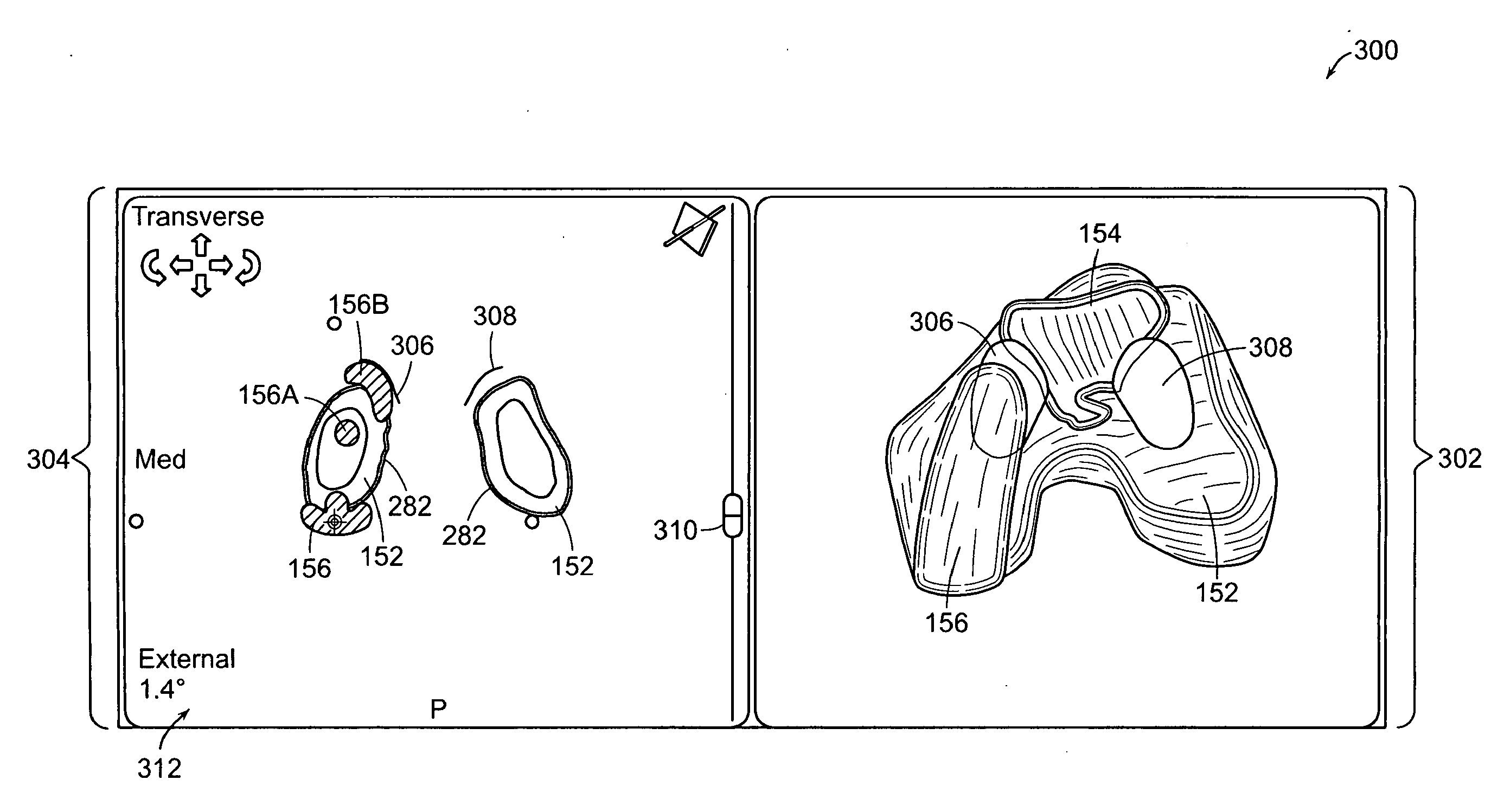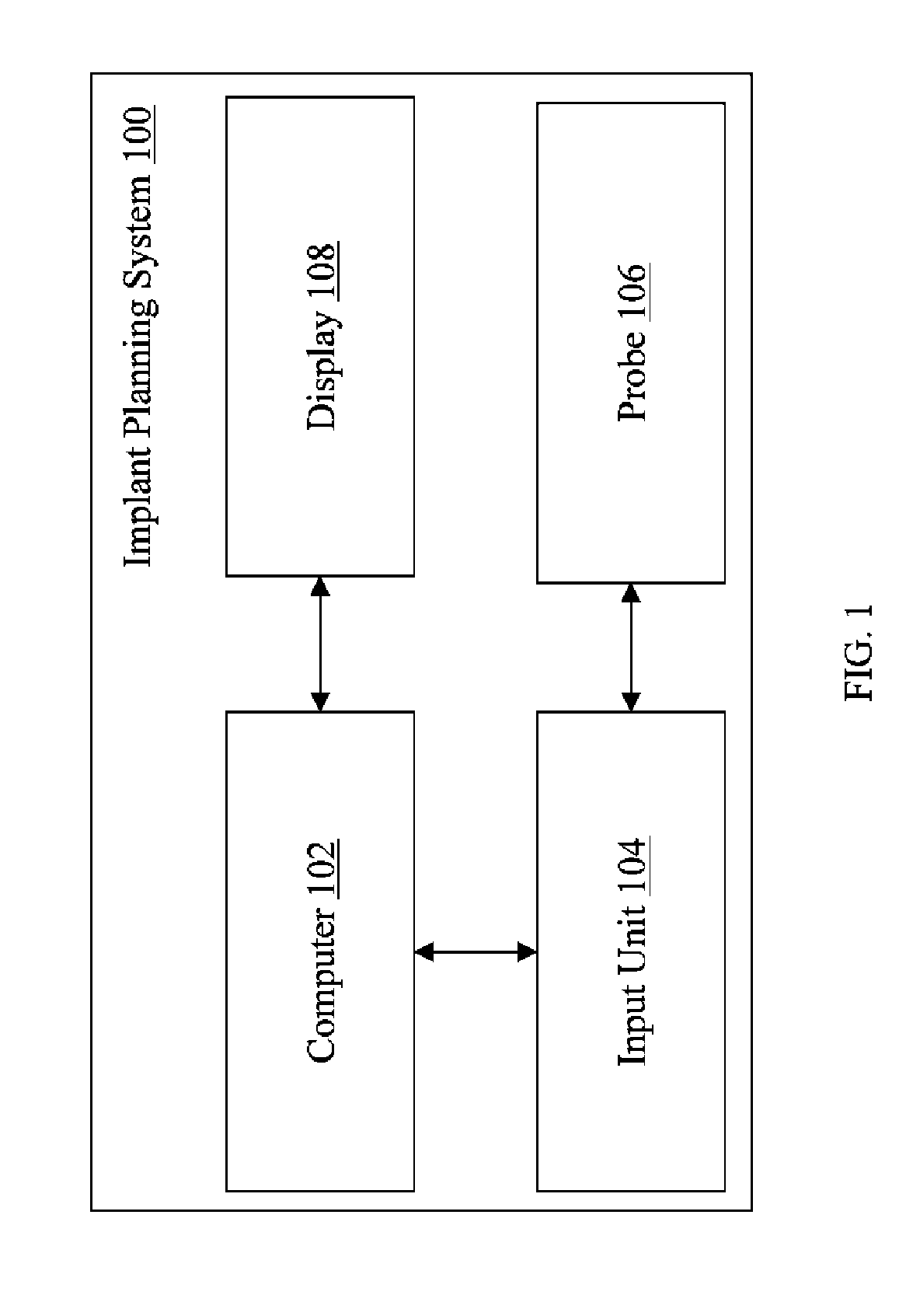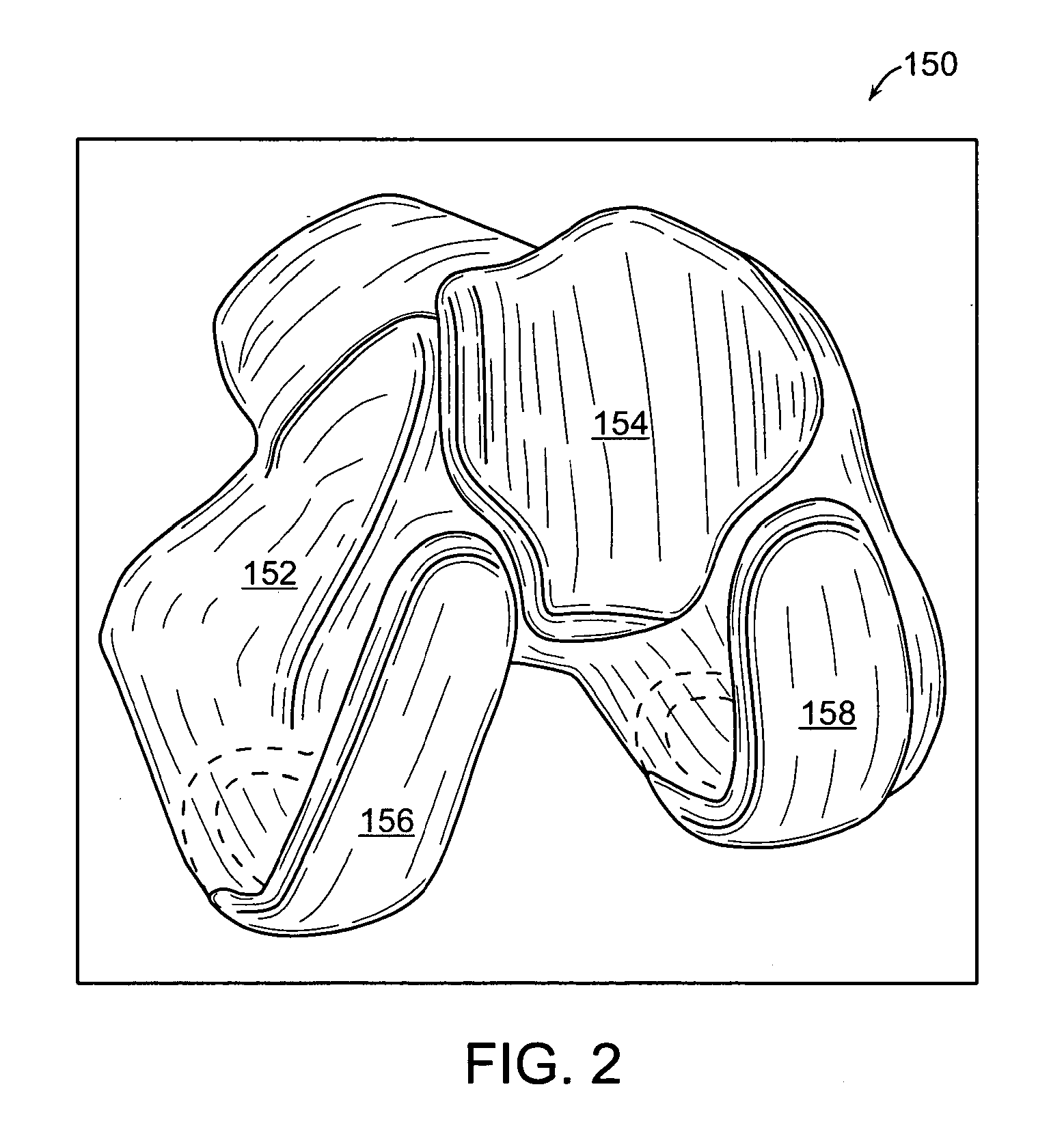Implant Planning for Multiple Implant Components Using Constraints
a technology of multiple implants and constraints, applied in the field of surgical computer systems, can solve the problems of reducing the accuracy of assessing the proper position of implants and reshaping bone, and reducing the surgeon's ability to view and access the anatomy of a joint. , to achieve the effect of convenient placement of implant components
- Summary
- Abstract
- Description
- Claims
- Application Information
AI Technical Summary
Benefits of technology
Problems solved by technology
Method used
Image
Examples
Embodiment Construction
[0044]Presently preferred embodiments are illustrated in the drawings. Although this specification refers primarily to knee joint replacement surgery, it should be understood that the subject matter described herein is applicable to other joints in the body, such as, for example, a shoulder, elbow, wrist, spine, hip, or ankle and to any other orthopedic and / or musculoskeletal implant, including implants of conventional materials and more exotic implants, such as orthobiologics, drug delivery implants, and cell delivery implants.
[0045]In general overview, multiple component implant planning is achieved by constraining the adjustment of the individual components of the multiple component implant. Each component can be adjusted based on the constraints, allowing a proper fit for each implant component while preventing improper placement. FIG. 1 illustrates an exemplary multiple component implant planning system 100 according to the present invention. The system includes computer 102. C...
PUM
 Login to View More
Login to View More Abstract
Description
Claims
Application Information
 Login to View More
Login to View More - R&D
- Intellectual Property
- Life Sciences
- Materials
- Tech Scout
- Unparalleled Data Quality
- Higher Quality Content
- 60% Fewer Hallucinations
Browse by: Latest US Patents, China's latest patents, Technical Efficacy Thesaurus, Application Domain, Technology Topic, Popular Technical Reports.
© 2025 PatSnap. All rights reserved.Legal|Privacy policy|Modern Slavery Act Transparency Statement|Sitemap|About US| Contact US: help@patsnap.com



